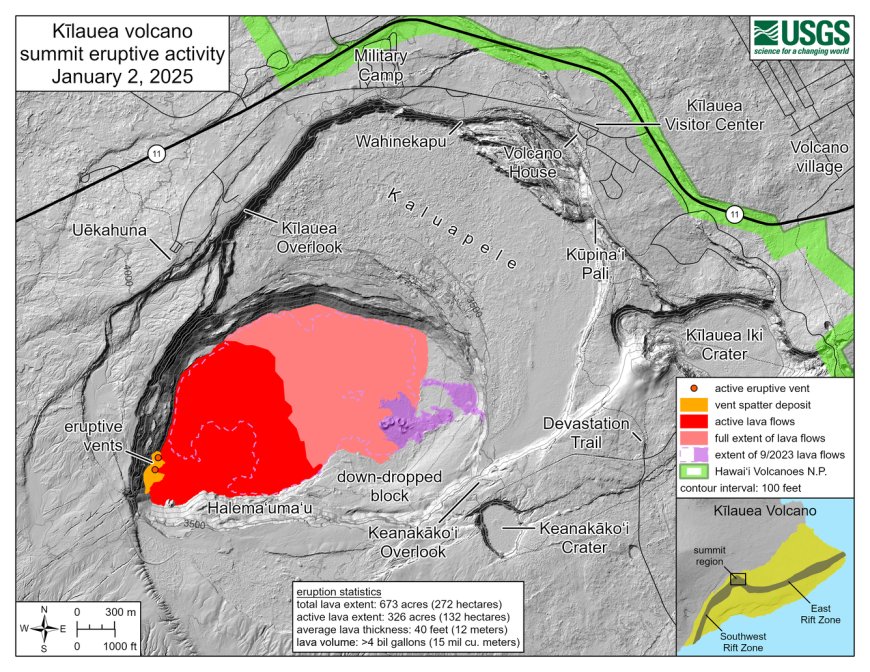Lava in Motion: Kīlauea’s Eruption Captured Through AR-Powered Photos and Safety Insights
Explore stunning USGS images of Kīlauea’s ongoing eruption, enhanced by augmented reality lava flow simulations. Safety advice for residents and visitors included.

HONOLULU, August 26, 2025 — The Kīlauea volcano on Hawai‘i's Big Island continues its dramatic eruption, as stunning United States Geological Survey (USGS) images reveal molten lava fountains and glowing flows within Halema‘uma‘u crater. These striking photos are now paired with augmented reality (AR) simulations that let readers follow lava paths in real time, bringing deeper insight to unfolding geological events.
Eye-Catching Imagery Reflected in Real Time
Recent USGS photographs—such as the livestreamed lava fountains and close-ups of glowing magma—showcase eruptive behavior ranging from towering jets of molten rock to molten ponds seeping across crater floors. These are the most vivid visuals captured since the eruption began on December 23, 2024, with episodes of lava fountaining still erupting weekly.AP NewsWikipedia
Layering the images are AR simulations that overlay real-time lava flow projections, offering readers an interactive method to understand flow direction and speed. These AR visuals draw on near real-time thermal satellite data—similar to open-source tools that update every 12 hours—enhanced by scientific models and USGS mapping.MDPIUSGS

What the AR Overlay Adds to Understanding
-
Predictive visualization of where molten lava might travel, adding context beyond static photography.
-
Dynamic clarity—readers can toggle between current camera views and changing simulated flow paths, enhancing situational awareness.
-
Educational depth, showing how magma behavior influences terrain and eruption dynamics.
Safety Measures for Residents and Visitors
The eruption remains contained within the summit crater—posing no immediate threat to nearby communities—but officials urge continued vigilance. Sulfur dioxide (SO₂) emissions and volcanic glass strands, known as Pele’s hair, can irritate skin, eyes, and the respiratory system.AP NewsUSGS
Visitors to Hawaiʻi Volcanoes National Park are advised to:
-
Stay on marked trails and heed warning signs.
-
Avoid venturing beyond closed areas—especially near unstable cliffs, lava tubes, or ash-covered terrain.The GuardianWikipedia
-
Observe volcanic activity from approved overlooks before rejoining standard routes.
The Hawaii Department of Health continues to issue advisories for those in elevated gas exposure areas, emphasizing safeguarding vulnerable populations by monitoring air quality updates and vog (volcanic smog).Hawaii Department of Health
Why This Matters—Science Meets Safety
| Benefit | Explanation |
|---|---|
| Real-time awareness | AR simulations make evolving lava behavior understandable and accessible. |
| Visitor safety | Combining images with geospatial context reinforces essential hazard awareness. |
| Cultural resonance | Kīlauea remains sacred—visual and interactive storytelling bridges traditional reverence with modern science.AP News |
The integration of high-resolution imagery and AR technology not only elevates storytelling—it transforms how the public connects with natural events, merging visualization and precaution like never before.
Further Reading
-
For an in-depth update on the 31st eruption episode—including lava height and ongoing monitoring—see AP News: Kīlauea volcano shooting lava 100 feet high in 31st eruption since December.AP News
-
For official technical details on eruptive patterns and summit behavior, visit the USGS Volcano Updates page: Volcano Updates | U.S. Geological Survey.USGS











